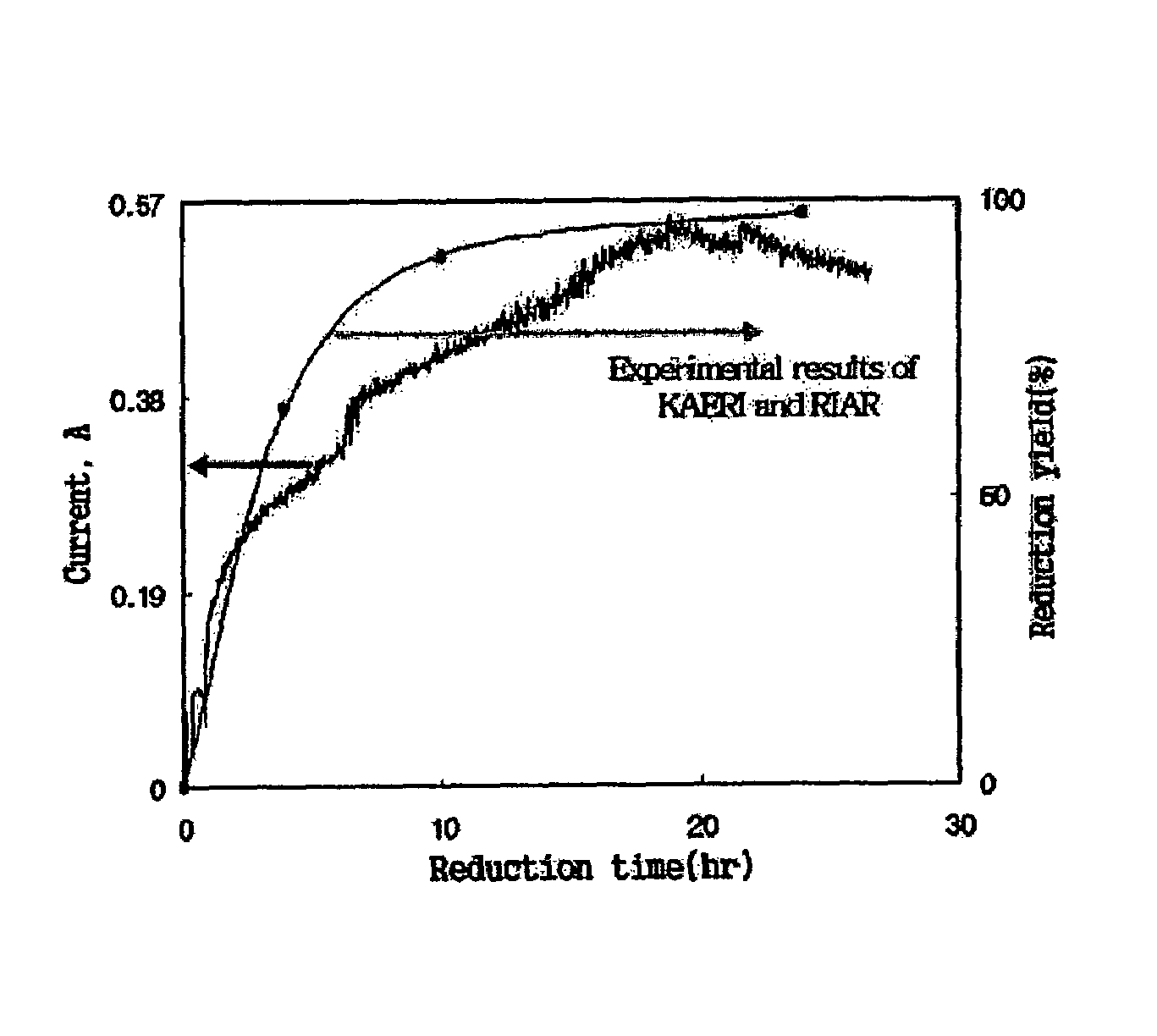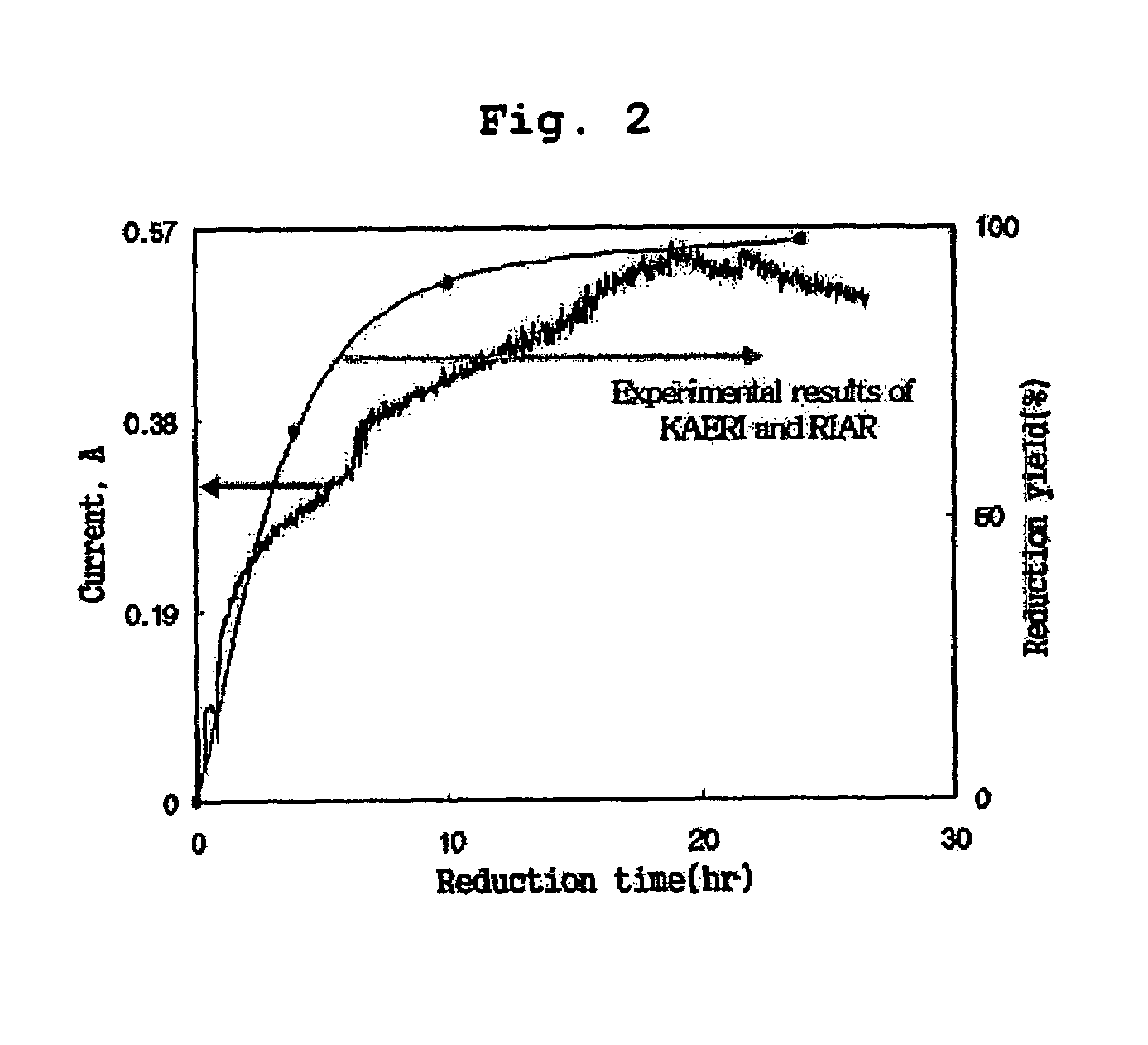Method of in-situ monitoring a reduction of uranium oxides by lithium metal
a technology of lithium metal and insitu monitoring, which is applied in the direction of liquid/fluent solid measurement, nuclear engineering, nuclear elements, etc., can solve the problems of reducing the efficiency of oxide fuel combustion, permanently disposed of of spent fuel with low efficiency, and inability to perform wet re-treatment process, etc., to achieve the effect of simplifying the measurement of a conversion yield
- Summary
- Abstract
- Description
- Claims
- Application Information
AI Technical Summary
Benefits of technology
Problems solved by technology
Method used
Image
Examples
example 1
Measurement of Conversion Yield of Uranium from Uranium Oxide
[0035]300 g of lithium chloride and 31.6 g of uranium oxide (U3O8) were introduced into a stainless reactor, after which the temperature in the reactor was increased to 650° C. under argon gas atmosphere to melt lithium chloride. An anode formed of a platinum wire and a cathode formed of iron (Fe) were placed into the reactor, and then connected to a potentiostat / galvanostat. Subsequently, 7 g of lithium metal was further added into the reactor, and cathodic current variation versus time was continuously measured at electrostatic potential of 2.0 V.
[0036]The above cathodic current results are depicted in FIG. 2. In addition, to compare the above current results of the present invention with the experimental results by the conventional wet analytical method, FIG. 2 depicts the results of reduction experiment by the wet analytical method using spent fuel, provided jointly by Korea Atomic Energy Research Institute (KAERI) and...
PUM
| Property | Measurement | Unit |
|---|---|---|
| Temperature | aaaaa | aaaaa |
| Electrostatic potential | aaaaa | aaaaa |
| Electrostatic potential | aaaaa | aaaaa |
Abstract
Description
Claims
Application Information
 Login to View More
Login to View More - R&D
- Intellectual Property
- Life Sciences
- Materials
- Tech Scout
- Unparalleled Data Quality
- Higher Quality Content
- 60% Fewer Hallucinations
Browse by: Latest US Patents, China's latest patents, Technical Efficacy Thesaurus, Application Domain, Technology Topic, Popular Technical Reports.
© 2025 PatSnap. All rights reserved.Legal|Privacy policy|Modern Slavery Act Transparency Statement|Sitemap|About US| Contact US: help@patsnap.com



